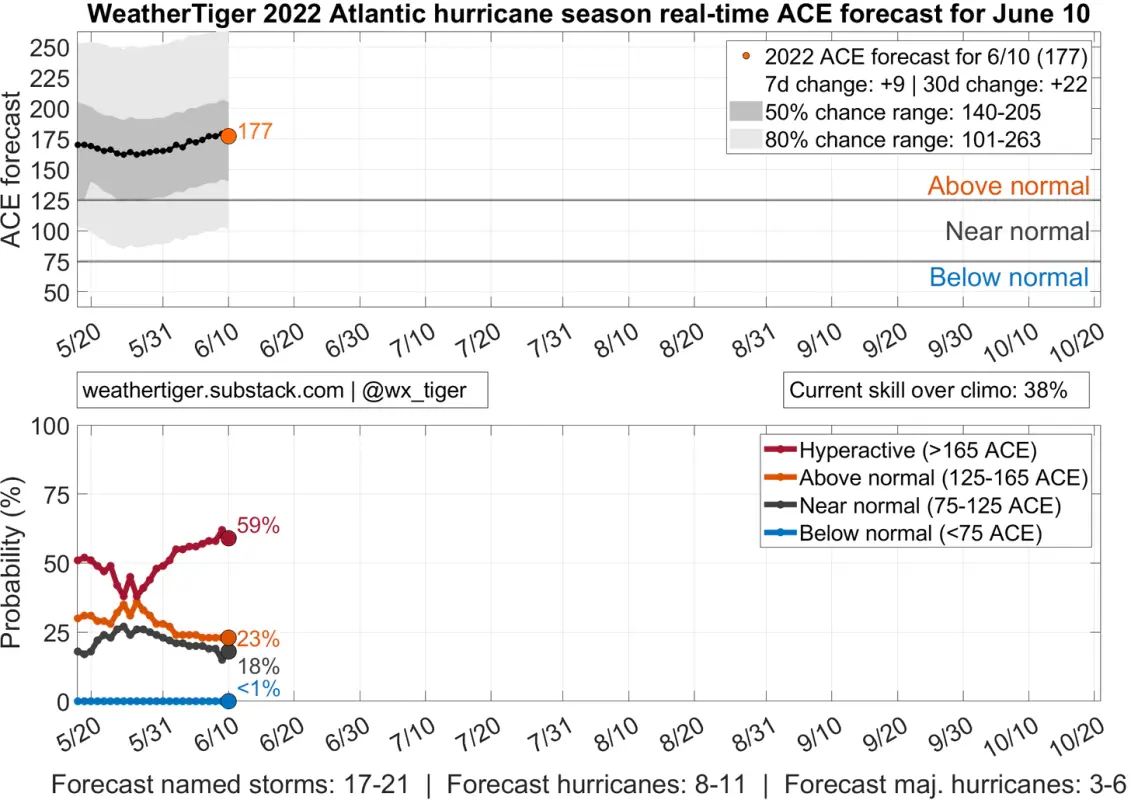toad strangler wrote:Spacecoast wrote:In the CSU June 2nd forecast, Phil K identified six analog years that have key environmental conditions which are similar to current May 2022 conditions and, more importantly, projected August–October 2022 conditions....
"Analog years for 2022 (generally characterized by cool neutral ENSO or
weak La Niña conditions and warmer than normal North Atlantic SSTs
during the peak of the Atlantic hurricane season):"
1996, 1999, 2000, 2008, 2011, & 2021
Here are the hurricane tracks for those six years:...
https://i.ibb.co/FDjPptv/anatracks.jpg
Total of 47 hurricanes, (27 of them were major hurricanes). Average of 7.8 hurricanes / year, and 4.5 major hurricane / year.
Interesting to note how many recurved and the number of NC landfalls.
Re-Curves off the SE US Coast are standard climo fair and I don’t think are attached to Niña or cool neutral ENSO years in any exclusive capacity. I mean that’s the Atlantic Basin I-95. It’s there nearly every year.
NC landfalls? Well it’s the “Cow Catcher” for a reason. It’s not the Niña Cow Catcher.
Just playing devils advocate. I firmly believe there is no correlation to specific tracks compared to similar base basin or global indicators. IMO 500mb is the key and can be extremely fluid no matter all the other indicators.
To add to this, I can think of many La Nina years like 1995, 1999, 2000, 2010, 2011, and 2021 that were heavy recurve years (even then, some of those years definitely had at least one very strong storm make a memorable CONUS or other landmass impact). Then you have years like 1998, 2005, 2008, 2017, and 2020 that were also La Nina years (of varying strengths too) and that featured way more devastating land impacts. I agree with your statement.





















